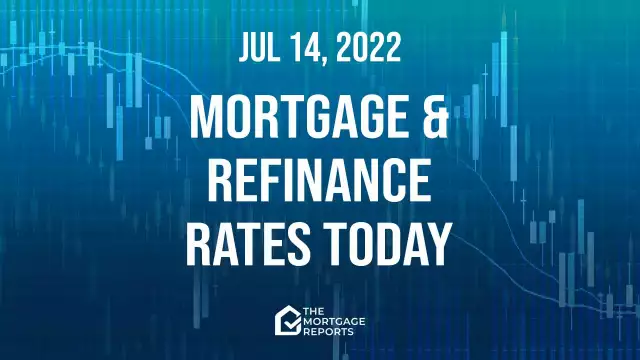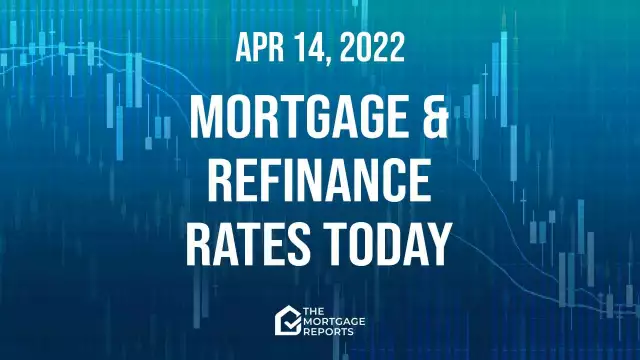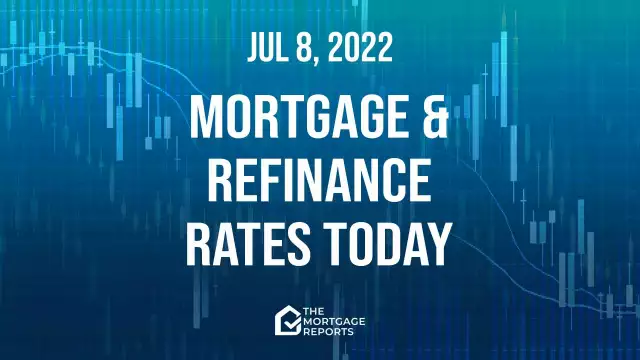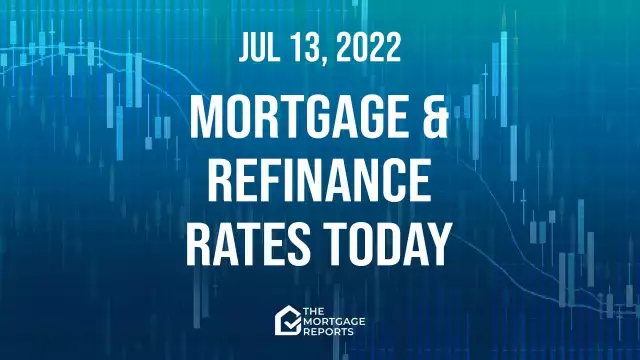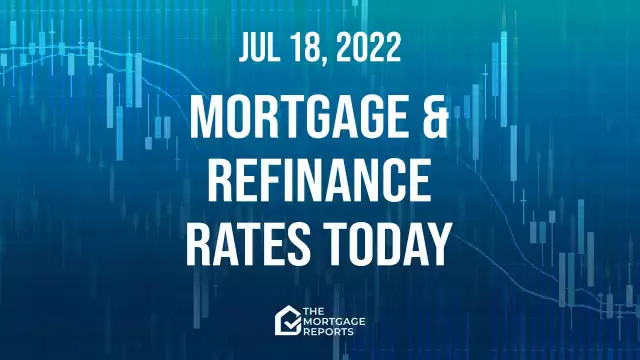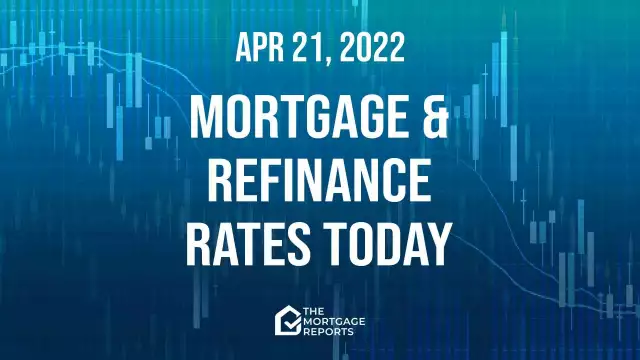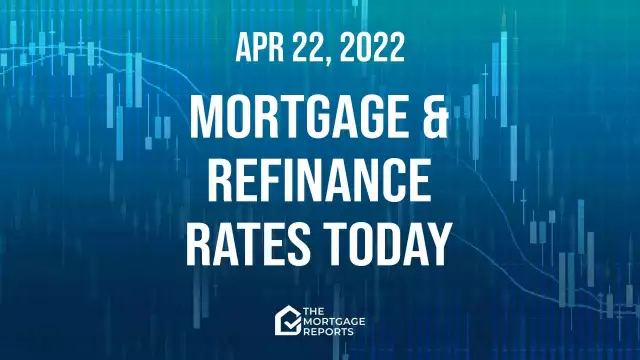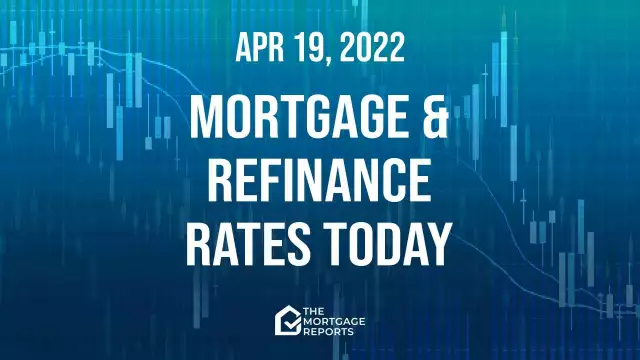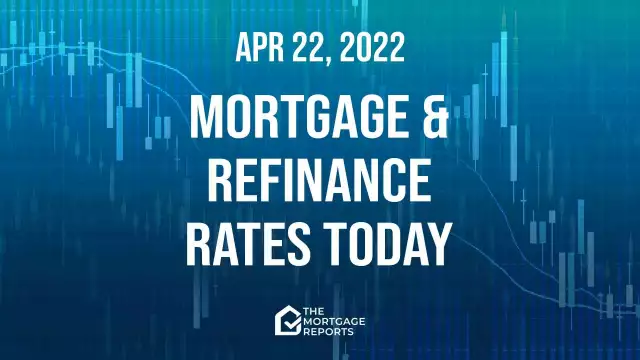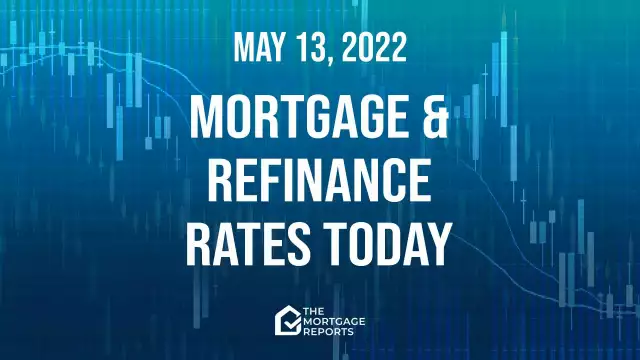Mortgage And Refinance Rates, July 14 | Rates rising today
Mortgage And Refinance Rates, July 14 | Rates rising today
Today’s mortgage and refinance rates
Average mortgage rates just inched higher yesterday. That was a real surprise because they began that morning moving strongly higher.
So far this morning, it’s looking as if mortgage rates today might rise. But we saw yesterday how unreliable these early trends can be during times of volatility.
Current mortgage and refinance rates
Should you lock a mortgage rate today?
Don't lock on a day when mortgage rates look set to fall. My recommendations (below) are intended to give longer-term suggestions about the overall direction of those rates. So, they don’t change daily to reflect fleeting sentiments in volatile markets.
Mortgage rates remain on a gentle upward trajectory. But the possibility of that reversing is increasing. So watch this space.
Still, for now, my personal rate lock recommendations for the longer term must remain:
>Related: 7 Tips to get the best refinance rate
Market data affecting today’s mortgage rates
Here’s a snapshot of the state of play this morning at about 9:50 a.m. (ET). The data, compared with roughly the same time yesterday, were:
*A movement of less than $20 on gold prices or 40 cents on oil ones is a change of 1% or less. So we only count meaningful differences as good or bad for mortgage rates.
Yes, market data are looking good for mortgage rates, but prices for mortgage bonds suggest those rates are rising quite strongly this morning.
Caveats about markets and rates
Before the pandemic and the Federal Reserve’s interventions in the mortgage market, you could look at the above figures and make a pretty good guess about what would happen to mortgage rates that day. But that’s no longer the case. We still make daily calls. And are usually right. But our record for accuracy won’t achieve its former high levels until things settle down.
So use markets only as a rough guide. Because they have to be exceptionally strong or weak to rely on them. But, with that caveat, mortgage rates today look likely to rise. However, be aware that “intraday swings” (when rates change direction during the day) are a common feature right now.
Important notes on today’s mortgage rates
Here are some things you need to know:
A lot is going on at the moment. And nobody can claim to know with certainty what will happen to mortgage rates in the coming hours, days, weeks or months.
Are mortgage and refinance rates rising or falling?
What on earth happened yesterday? That morning’s inflation news was bad and mortgage rates responded precisely as you’d expect: they moved sharply upward. But then something weird happened: They began to fall back. And they closed just a shade higher than they opened.
Here’s the best explanation I’ve found. Investors are increasingly worried that the Fed could react to yesterday’s bad inflation numbers with a full 1 percentage point rise when it meets on Jul. 26-27. That would see the Fed funds rate jump from 1.58% (effective) yesterday to 2.58%. It was 0.83% this time last month. Before yesterday, most had expected a 0.5% or 0.75% hike later this month.
That funds rate is the lever the Fed pulls when it wants to cool down (raise rate) or heat up (drop rate) inflation and the economy. That’s because a change to it feeds directly into virtually all variable-rate borrowing and indirectly into rates for new mortgages.
And if businesses and consumers are paying more for their borrowing, they have less left to invest and spend. So the economy cools, taking inflation with it.
Recession fears
Of course, markets are currently only speculating about a 1% rise. But that’s rather what they do.
Such a big hike in one go would be exceedingly rare. Last month’s smaller 0.75% one was the biggest since 1994. And markets seem increasingly convinced that such aggressive rate increases will trigger a recession.
You can see why. Yesterday, Kristalina Georgieva, who is managing director of the International Monetary Fund (IMF), wrote in a blog:
Inflation vs. recession
As I explain here quite often, inflation is hated by investors in fixed-rate assets, including bonds generally and mortgage bonds (“mortgage-backed securities” or MBSs) in particular. Once bought, these deliver the same yield no matter what happens. And high inflation eats away at what they can buy with that yield. The yield on new MBSs largely determines new mortgage rates.
What happened yesterday was that, after a couple of hours of reflection, markets decided that the prospect of a recession was even scarier than high inflation. So, they started buying MBSs again. That sent MBS prices up and yields (and so mortgage rates) back down. Bond yields always move inversely to prices.
Although I have some egg on my face, I’m relieved that I wrote yesterday: “It can take markets a while to fully digest new data. So, again only sometimes, they react one way to a new report only to turn tail and rush the other way later in the day.” Tush covered.
Markets seem to be reacting to this morning’s producer price index for June as they did the consumer price index yesterday. Does that mean they’ll change direction later? They might do. But it would be odd for the same thing to happen two days running.
Read the weekend edition of this daily article for more background.
Recent trends — updated today
Over much of 2020, the overall trend for mortgage rates was clearly downward. And a new, weekly all-time low was set on 16 occasions that year, according to Freddie Mac.
The most recent weekly record low occurred on Jan. 7, 2021, when it stood at 2.65% for 30-year fixed-rate mortgages.
Rates then bumbled along, moving little for the following eight or nine months. But they began rising noticeably that September. Unfortunately, they’ve been mostly shooting up since the start of 2022, although May and June were kinder months.
Freddie’s Jul. 14 report puts that same weekly average for 30-year, fixed-rate mortgages at 5.51% (with 0.8 fees and points), up from the previous week’s 5.3%.
Note that Freddie expects you to buy discount points (“with 0.8 fees and points”) on closing that earn you a lower rate. If you don’t do that, your rate would be closer to the ones we and others quote.
Expert mortgage rate forecasts
Looking further ahead, Fannie Mae, Freddie Mac and the Mortgage Bankers Association (MBA) each has a team of economists dedicated to monitoring and forecasting what will happen to the economy, the housing sector and mortgage rates.
And here are their current rate forecasts for the remaining three quarters of 2022 (Q2/22, Q3/22, Q4/22) and the first quarter of next year (Q1/23).
The numbers in the table below are for 30-year, fixed-rate mortgages. Fannie’s were published on Jun. 16, and the MBA’s on Jun. 10. Freddie’s were released on Apr. 18. But it now updates its figures only quarterly, so they’re already looking stale.
| Forecaster | Q2/22 | Q3/22 | Q4/22 | Q1/23 |
| Fannie Mae | 5.1% | 5.0% | 5.0% | 5.0% |
| Freddie Mac | 4.8% | 4.8% | 5.0% | 5.0% |
| MBA | 5.1% | 5.1% | 5.0% | 5.0% |
Of course, given so many unknowables, the whole current crop of forecasts might be even more speculative than usual. Recent events certainly make them look that way.
Find your lowest rate today
You should comparison shop widely, no matter what sort of mortgage you want. As federal regulator the Consumer Financial Protection Bureau says:
“Shopping around for your mortgage has the potential to lead to real savings. It may not sound like much, but saving even a quarter of a point in interest on your mortgage saves you thousands of dollars over the life of your loan.”
Mortgage rate methodology
The Mortgage Reports receives rates based on selected criteria from multiple lending partners each day. We arrive at an average rate and APR for each loan type to display in our chart. Because we average an array of rates, it gives you a better idea of what you might find in the marketplace. Furthermore, we average rates for the same loan types. For example, FHA fixed with FHA fixed. The end result is a good snapshot of daily rates and how they change over time.
